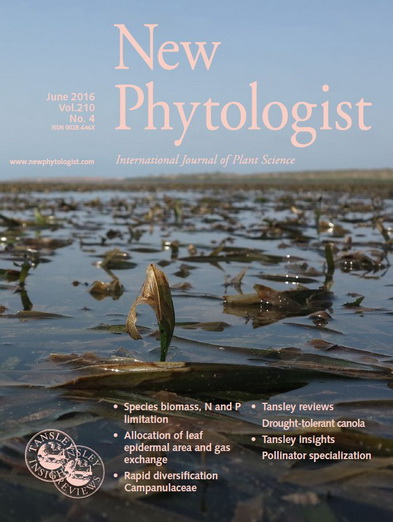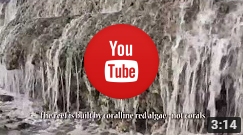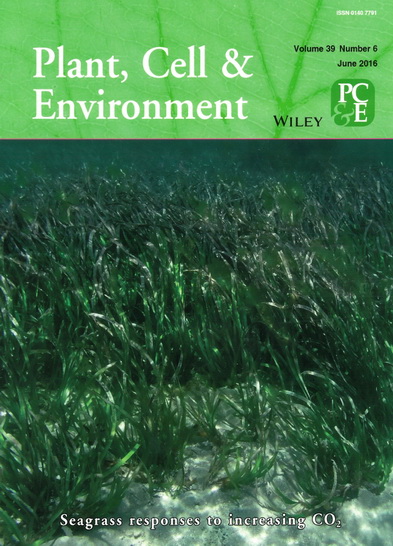Heat stress and dramatic tissue O2 dynamics in tropical seagrasses
Seagrasses grow submerged in aerated seawater but often in low O2 sediments. Elevated temperatures and low O2 are stress factors. Internal aeration was measured in two tropical seagrasses, Thalassia hemprichii and Enhalus acoroides, growing with extreme tides and diel temperature amplitudes. Temperature effects on net photosynthesis (PN) and dark respiration (RD) of leaves were evaluated. Daytime low tide was characterized by high pO2 (54 kPa), pH (8.8) and temperature (38°C) in shallow pools. As PN was maximum at 33°C (9.1 and 7.2 µmol O2 m-2 s-1 in T. hemprichii and E. acoroides, respectively), the high temperatures and reduced CO2 would have diminished PN, whereas RD increased (Q10 of 2.0–2.7) above that at 33°C (0.45 and 0.33 µmol O2 m-2 s-1, respectively). During night-time low tides, O2 declined resulting in shoot base anoxia in both species, but incoming water containing c. 20 kPa O2 relieved the anoxia. Shoots exposed to 40°C for 4 h showed recovery of PN and RD, whereas 45°C resulted in leaf damage. These seagrasses are ‘living near the edge’, tolerant of current diel O2 and temperature extremes, but if temperatures rise both species may be threatened in this habitat.
The study is published in:Pedersen O, Colmer TD, Borum J, Zavala-Perez A, Kendrick GA. (2016) Heat stress of two tropical seagrass species during low tides – impact on underwater net photosynthesis, dark respiration and diel in situ internal aeration. New Phytologist 210: 1207-1218.
Photosynthetic responses of temperate seagrasses to increasing CO2
Photosynthesis of most seagrass species seems to be limited by present concentrations of dissolved inorganic carbon (DIC). Therefore, the ongoing increase in atmospheric CO2 could enhance seagrass photosynthesis and internal O2 supply, and potentially change species competition through differential responses to increasing CO2 availability among species. We used short-term photosynthetic responses of nine seagrass species from the south-west of Australia to test species-specific responses to enhanced CO2 and changes in HCO3-. Net photosynthesis of all species except Zostera polychlamys were limited at pre-industrial compared to saturatingCO2 levels at light saturation, suggesting that enhancedCO2 availability will enhance seagrass performance. Seven out of the nine species were efficient HCO3- users through acidification of diffusive boundary layers, production of extracellular carbonic anhydrase, or uptake and internal conversion of HCO3-. Species responded differently to near saturating CO2 implying that increasing atmospheric CO2 may change competition among seagrass species if co-occurring in mixed beds. Increasing CO2 availability also enhanced internal aeration in the one species assessed. We expect that future increases in atmospheric CO2 will have the strongest impact on seagrass recruits and sparsely vegetated beds, because densely vegetated seagrass beds are most often limited by light and not by inorganic carbon.
The study is published in:
Borum J, Pedersen O, Kotula L,
Fraser MW, Statton J, Colmer TD, Kendrick GA. (2016) Photosynthetic response to
globally increasing CO2 of co-occurring temperate seagrass species. Plant, Cell & Environment 39: 1240-1250.



